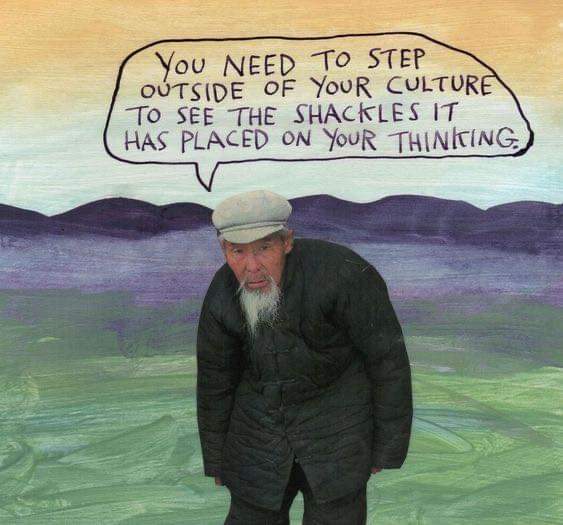For the last 20 years, our own crew have played a big part in shaping the digital world we see today. The outcome is what began as a space of radical possibility has been enclosed, exploited, and transformed into a corporate-controlled dystopia of #dotcons. We now lived inside this algorithmic trap, and in many ways, we still do, fighting, trolling, and feeding the very system that keeps us addicted.
Most of us are still trapped inside the algorithm, these platforms we use don’t exist to foster community or critical thought; they thrive on division. They keep us locked into emotional reaction loops, rewarding outrage, amplifying conflict, and turning us into performance artists in an endless identity war.

Take as an example #Failbook and the rise of victim culture. This isn’t an accident, it’s by design. The algorithm doesn’t care about truth or justice; it cares about engagement, and what gets the most clicks? Anger, Fear, Outrage. The result is a world where people react instead of act, trapped in cycles of performative identity rather than building any of the needed real alternatives.
What we don’t need is more “ethical” #dotcons. Repackaging the same centralized control under a new brand of “ethical” capitalism, is not the solution. We don’t need another walled garden with a friendlier #PR campaign. We need an independent, federated media ecosystem, one that #KISS values community, autonomy, and the public good over profit.
This is why the #OMN (Open Media Network) path exists. It’s not just another platform designed to extract data and profit, it’s a network of trust-based spaces, where people interact as humans, not as data points. The #Fediverse and #ActivityPub offer the foundation for this, but we need to push much harder. Right now, these alternatives still carry too much of the #mainstreaming liberal baggage that makes them fragile to inrushing capitalist capture.
We need to build spaces that resist corporate logic from the roots, not just replicate centralized control under new branding. To avoid repeating todays mess making, we need to remember how the capitalists capture of the #openweb in the first place. To understand how we got here, we have to look at capitalism through the lens of the #dotcons. The enclosure of the #openweb was not inevitable, it was a deliberate shift from public good to private profit.
Capitalism broke the web, with commercialization & enclosure, the originally was built as an open, decentralized space for information sharing. Capitalism transformed it into a marketplace, where value is extracted rather than created. Now we have the #mainstreaming exploitation of users, platforms like Facebook, Google, and Amazon don’t sell products, they sell you. Your data, your attention, your behaviour, all harvested, manipulated, and monetized.
This leads directly to the current monopolization & centralization, the most ruthless companies buy out competitors, stifle innovation, and consolidate power. What started as an open system is now controlled by a handful of corporations. Surveillance capitalism, the term, popularized by Shoshana Zuboff, describes the commodification of personal data for profit. What was once a tool for communication is now a weapon of manipulation.
With this move, we have erased the public sphere. Corporate algorithms don’t care about truth, knowledge, or democracy. They prioritize profit-driven content, promoting misinformation, sensationalism, and division while destroying any sense of a shared public space. This leaves us in a world of short-term gains for the nasty few over long-term vision for the meany, this stagnates progress and accelerates environmental and social collapse we now face.
We made this mess, now let’s fix it, the logic of the #dotcons is the problem. We can’t keep being prats about this. We’ve spent 20 years making this mess, now it’s past time to clean it up. Decentralization alone isn’t enough. We need alternative media spaces that reject control from the start. That’s what the #OMN is about. If we’re serious about breaking free, we need to use the #4opens as a shovel to compost the #techshit we’ve currently drowning in.
Time to stop only talking, let’s build. We don’t need another debate. We don’t need another corporate-controlled “alternative.” What we do need is to step outside the algorithm and start building trust-based networks that work for people, not profit. We do need to reclaim the #openweb before it’s too late. So, what are we waiting for? Let’s get to work.
#4opens #nothingnew #deathcult #geekproblem #OMN #openweb








